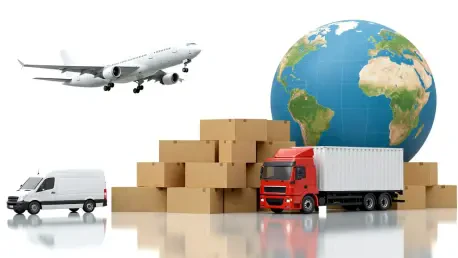Setting the Stage for a Logistics Revolution
In an era where global supply chains are stretched to their limits, consider a scenario where a single delayed shipment of critical aircraft parts costs an airline millions in downtime, or a batch of life-saving vaccines spoils due to a temperature lapse during transit. This is not a hypothetical situation but a daily reality for industries reliant on precision and speed. Specialized airfreight has emerged as a game-changer, addressing the unique demands of high-value, time-sensitive, and delicate cargo in a market that no longer tolerates one-size-fits-all solutions. This analysis dives into the forces driving this sector’s growth, examines current trends shaping its trajectory, and forecasts its future role in global logistics. The purpose is clear: to provide stakeholders with actionable insights into how tailored airfreight services are redefining supply chain efficiency and reliability.
Decoding the Market Dynamics of Specialized Airfreight
Current Landscape: A Shift to Customization
The specialized airfreight market is witnessing unprecedented growth as industries pivot from traditional bulk shipping to customized logistics solutions. Unlike standard cargo transport, this niche focuses on goods requiring meticulous handling due to their urgency or fragility, such as pharmaceutical products and aerospace components. Data from industry reports indicate that the demand for time-critical shipments has surged by over 20% in key sectors like healthcare and technology since 2025, driven by the need for rapid response and operational continuity. This shift reflects a broader recognition that logistics must evolve to meet the intricate needs of modern supply chains, where even minor disruptions can cascade into significant financial losses.
Key Drivers: Economic and Regulatory Catalysts
Several forces are propelling the expansion of specialized airfreight, with economic pressures and regulatory frameworks at the forefront. Just-in-time manufacturing models, prevalent across industries, amplify the need for on-time delivery of critical parts, as delays can halt production lines or ground aircraft in “Aircraft on Ground” (AOG) scenarios. Simultaneously, stringent standards like Good Distribution Practice (GDP) in pharmaceuticals mandate precise temperature controls and documentation, adding layers of complexity to cargo handling. Market analysis suggests that compliance with such regulations, while costly, is non-negotiable, as non-adherence risks fines and reputational damage, pushing companies toward tailored logistics providers who can navigate these challenges.
Technological Innovations: Redefining Cargo Handling
Technology plays a pivotal role in shaping the specialized airfreight sector, with advancements like real-time tracking and IoT-enabled sensors enhancing visibility and control over shipments. In regions like Asia-Pacific, where demand for high-tech electronics is booming, such tools are critical for protecting against theft and environmental damage during transit. Meanwhile, blockchain applications are gaining traction for securing documentation and ensuring transparency, though high implementation costs limit widespread adoption. Current market trends highlight a growing reliance on digital platforms to streamline operations, indicating that tech-driven solutions are becoming a competitive differentiator for logistics providers catering to niche cargo needs.
Projections: The Future Trajectory of Specialized Airfreight
Emerging Trends: Speed Meets Sustainability
Looking ahead, the specialized airfreight market is poised for transformative growth, fueled by emerging technologies and evolving consumer demands. Drone deliveries for urgent medical supplies and AI-driven route optimization are expected to reduce costs and improve efficiency over the next few years, with pilot programs already showing promise in urban hubs. Additionally, e-commerce’s insatiable appetite for rapid delivery of high-value goods is projected to drive a 15% annual increase in demand for specialized services through 2027. These trends underscore a market shifting toward greater agility, where logistics providers must adapt to deliver both speed and precision in an increasingly competitive landscape.
Regulatory and Environmental Challenges
Future growth in specialized airfreight will also be shaped by a tightening regulatory environment, particularly concerning sustainability. Stricter carbon emission standards in regions like Europe are pushing providers to explore alternative fuels and eco-friendly practices, though scalability remains a hurdle due to cost and infrastructure constraints. Market forecasts suggest that balancing environmental goals with the inherent urgency of specialized shipments will be a defining challenge, potentially reshaping pricing models and service offerings. Companies that can innovate in green logistics without compromising on speed are likely to gain a significant edge in this evolving sector.
Market Expansion: Opportunities Beyond Traditional Players
Another critical projection for the specialized airfreight market is its broadening accessibility beyond large corporations. Small and medium-sized enterprises, particularly those dealing in niche, high-value products, are increasingly turning to tailored logistics to compete in global markets. Industry analysis indicates that partnerships between smaller businesses and specialized providers are on the rise, driven by the need for cost-effective yet reliable solutions. This democratization of access is expected to expand the market’s reach, creating new opportunities for logistics firms to cater to diverse client bases while addressing unique industry pain points with customized services.
Reflecting on Insights and Charting the Next Steps
This analysis of specialized airfreight reveals a market at a pivotal juncture, where customization, technology, and regulatory compliance converge to redefine global logistics. The examination of current trends shows a clear shift toward precision-driven services, while projections highlight the transformative potential of innovations like AI and drones alongside challenges like sustainability mandates. For stakeholders, the implications are profound: adapting to this dynamic landscape requires strategic partnerships with expert providers, investment in cutting-edge tracking tools, and proactive engagement with evolving regulations. Moving forward, businesses are encouraged to prioritize flexibility, integrating digital solutions to preempt disruptions and exploring sustainable practices to align with global standards. Ultimately, the path ahead demands a reimagining of logistics not just as a function, but as a strategic asset capable of driving resilience and growth in an interconnected world.









